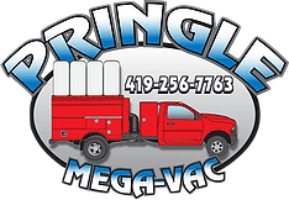Questions About Duct Work in Toledo, OH
Frequently Asked Questions About HVAC Cleaning
Serving Toledo, Findlay, Lima, Defiance, Napoleon, Bryan, Wauseon, Paulding and more.
Get a Quote Now, or Call Us at (419) 256-7763 to hear our Special Pricing!
There is a Terrible Smell Coming from Your Air Vents
Will a Professional Duct Cleaning Rectify This Situation?
From time to time we hear our technicians talk about the venturi effect in duct work. Many Ohio homeowners are not familiar with this term nor do they know how it affects them. I would like to explain this phenomenon now and see if I can clear the air.
Duct work generally starts with large trunk lines originating near the furnace. The trunk line(s) are the largest and have the biggest volume of air. As the ducts get farther and farther from the blower of the furnace they generally get narrower. This reduction in size also results in a venturi effect; when you narrow something, the velocity of the liquid or gas passing through it will naturally increase.
Duct work in an Ohio home or commercial structure is not airtight. Even if the heating contractor is extremely conscientious during the installation, there are going to be some spots through which air can pass. Seams, bends and other connections will not be completely sealed. The venturi effect can also apply here, in a different way. As air passes quickly through ducts (as mentioned above) the velocity increases as it passes through a narrower and narrower opening. If there are any openings or gaps along the sides, air from these gaps is going to be sucked in to the passing, moving air. Logic would have you assume the opposite (that the air would be pushed back away from this moving force, but instead it is sucked in to the flow by the “venturi effect”).
Based on this principle, if you have any kind of odor or smoke outside of your ductwork, and if there are any openings in the duct (big or small), that odor will be drawn into the flow of air and thus distributed throughout your home. This is why it is really difficult to isolate where a smell or musty odor is coming from. If you duct work passes through a crawl space, basement or attic, odors from these areas can be drawn into the air and then disbursed throughout your home. The only way to truly clear up the odor is to eliminate the source completely. If it is not eliminated, and if you clean the ducts, the smell will just continue to be drawn into your system.
Viruses, bacteria, mold are all airborne contaminants and these too can be picked up by the venturi effect. A genuine concern for homeowners is the transmission of the avian flu. Birds can nest in areas in which your ducts pass through, such as an attic or crawl space. Avian influenza is rare in humans but if it is contracted, it is often deadly. More than half the people who catch the avian flu will die from it. Another rare airborne virus but of concern is the Hantavirus. Hantavirus is a respiratory illness that humans can get from ingesting dust contaminated with the feces of rodents such as mice or rats. Like the avian flu, your HVAC system can pick up this virus from dust in your attic and crawl space and draw it into air where it can make you ill.
Again, the only true solution to thoroughly remove these and other contaminants is to first thoroughly eliminate the source and to clean out the ducts.
It is very important to check your AC drain and pan during the summer
Have you recently turned on your air conditioner in your home and noticed a musty or moldy smell? The solution may be to clean your air conditioner evaporator coils. These coils are situated within the air stream of your furnace/air handler. Because of where they are located, these coils accumulate dust particles and dirt that is circulated within in the ductwork of the HVAC system. When your thermostat is turned down and calls for cool air, the system will respond and start to circulate. As the cold air conditioner coils are exposed to the warm moving air, condensation results. This water runs down the coils but they natually will remain wet; As a result any dust that gets blown through system will then “stick” to this damp metal. When enough condensate builds up it will run down into the drain pan below carrying with it some of the collected dust. The pan has a small drain pipe that will either lead outside the home, into the crawl space or to the condensate pump. It is important as a homeowner to know where this drain area is so that you can check for a clog or blockage. If it is blocked, the condensate water will collect and remain in the pan below the coils. This is a breeding ground for mold. Anytime the relative humidity in the air is above 60% and a food source of organic materials such as dust and/or construction debris is present, mold can grow.
There are a few things that a homeowner might notice that would indicate that your drain plug may be clogged. There may be water near or under your furnace or you may notice a musty smell when your air conditioner is blowing. You may also have a secondary drain on the system that could be dripping water. These drains are often located in a conspicuous location on the home, such as above a doorway or off a roof line, so that you would be sure to notice the drip.
Sometimes the drain pan under the coil is not sitting level and the water will naturally collect in the “low” end instead of draining. We do not do repairs such as this, or others to your HVAC system, but our technician will alert the homeowner if he notices a defect such as this. Often this leaning can occur when a house settles; the builder or plumber may have originally set the pan properly but after a few years the foundation may have shifted and settled just enough to affect the drainage. If you have a low end and a high end, water will naturally gravitate to the low area. As a result your coils will now be constantly sitting in water. This is a prime breeding ground for mold; Mold needs water and organic food (dust) to thrive, both of which you have. In addition to the dusty/moldy coils, this standing water will naturally migrate throughout the ductwork with the airflow; Unfortunately the mold spores will also get blown throughout the house.
When you hire Pringle Mega-Vac to come do a normal duct cleaning, the evaporator coil is blown out as part of the process. The coil is in the trunk line near the furnace and this is vacuumed out whenever we clean the duct work. We also clean all of the supply ducts, return ducts, and the blower component of the furnace. When we come to do a chemical coil cleaning (which is necessary if the coils are partially or fully blocked with pet hair and other debris), the process is a little more complex. Our service technician will access the coil in your duct work and first use a fin comb to manually comb off the coils. Next, he will use a vacuum or a high pressure air line to clean off the heavy accumulated debris. Finally he will spray a chemical cleaner directly on to the coils. This cleaner is specially formulated to dissolve dirt, hair, oils, and dust. All of these particles get caught and built up between the fins. The solvent is allowed to soak for approximately 5-10 minutes, then everything is flushed with clean water. This water will now flush easily out of the coil and drain pipe as it is designed to do. The final step of the process is a sanitizing/deodorizing of the complete system. We use a product called Oxine. Oxine is an EPA approved antimicrobial spray that kills any mold that might remain after the cleaning. It is completely safe for household use and if you were to break it down chemically it is equivalent to table salt.
When we leave your home will smell much fresher and you can be assured that the ducts and coils have been cleared of dust and debris.
Is Home Air Duct Cleaning or Vent Cleaning Really Necessary?
Many Ohio residents call us at Pringle Mega-Vac Air Duct Cleaning and simply ask “how do I know if I need my heat vents cleaned”? Also, Is air duct cleaning necessary? Those are two good (and frequently asked questions) and can be answered with a few simple questions in response:
- Are you or is someone in your home suffering from allergies or asthma? Yes? Then air duct cleaning could be helpful and beneficial.
- Do you see mold or visible dust/dirt on your registers? If so, air duct cleaning is necessary.
- Do you have a strange or suspect odor emanating from your ductwork?
- Have you recently had a fire or smoke damage to your home or recent construction (such as remodeling or floor refinishing)?
- Are you experiencing excessive dust around your home on top of furniture and ceiling fans?
- Did you purchase a home in Ohio and suspect that the previous owners were smokers or had pets?
If you can answer “YES” to any of the above questions, then we can reply “YES, YOU DO NEED YOUR DUCTWORK CLEANED”. Duct Cleaning is Necessary.

